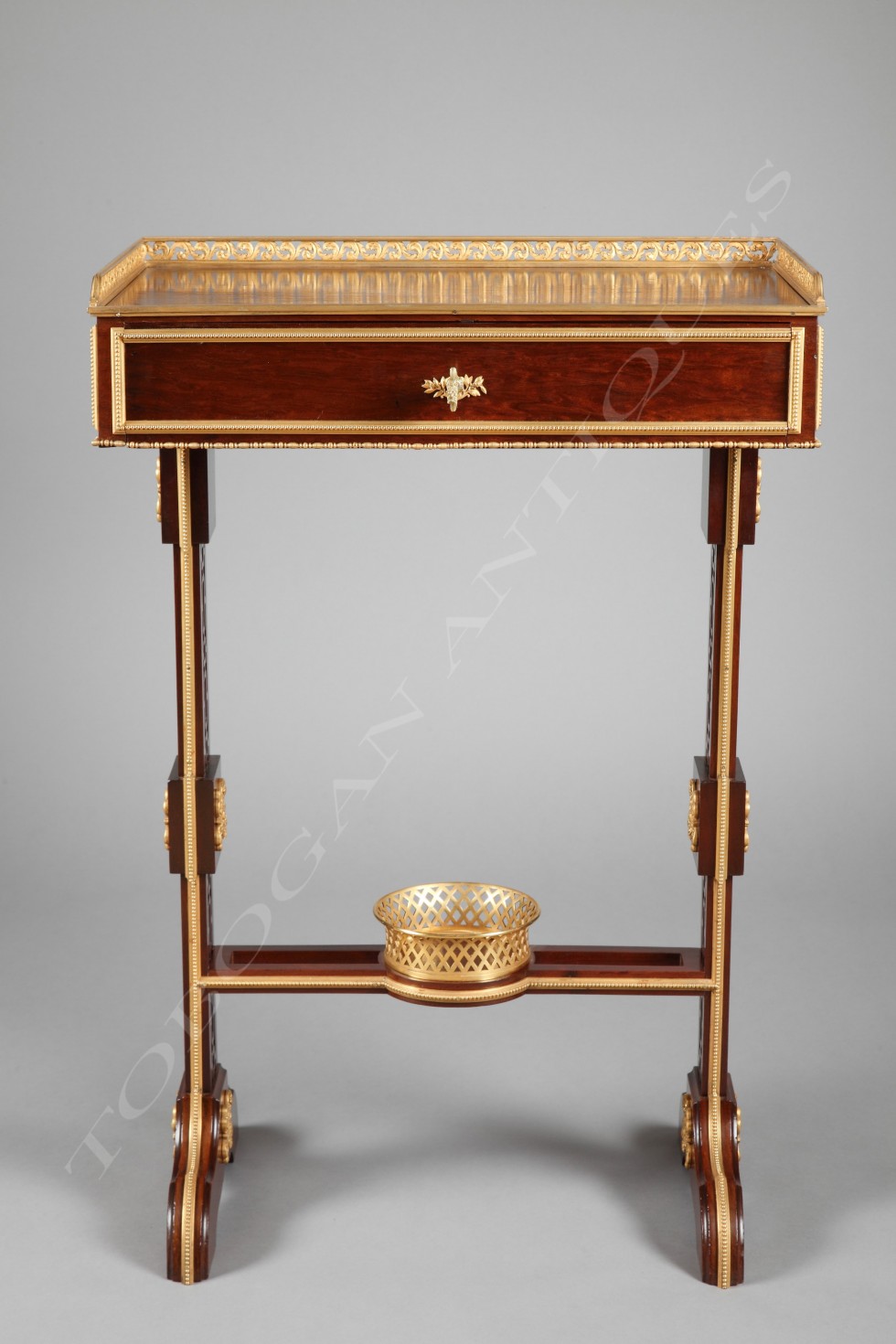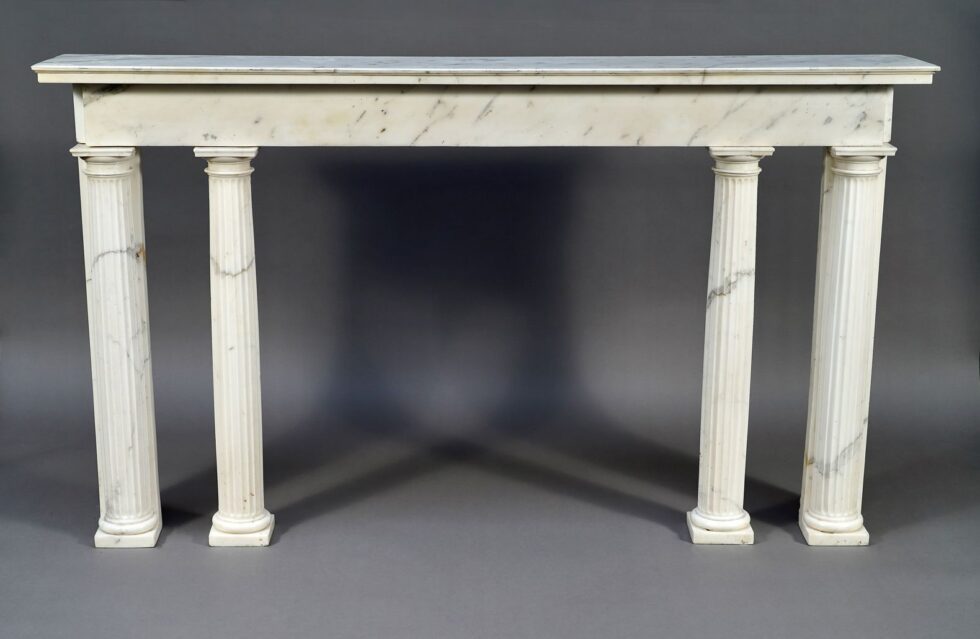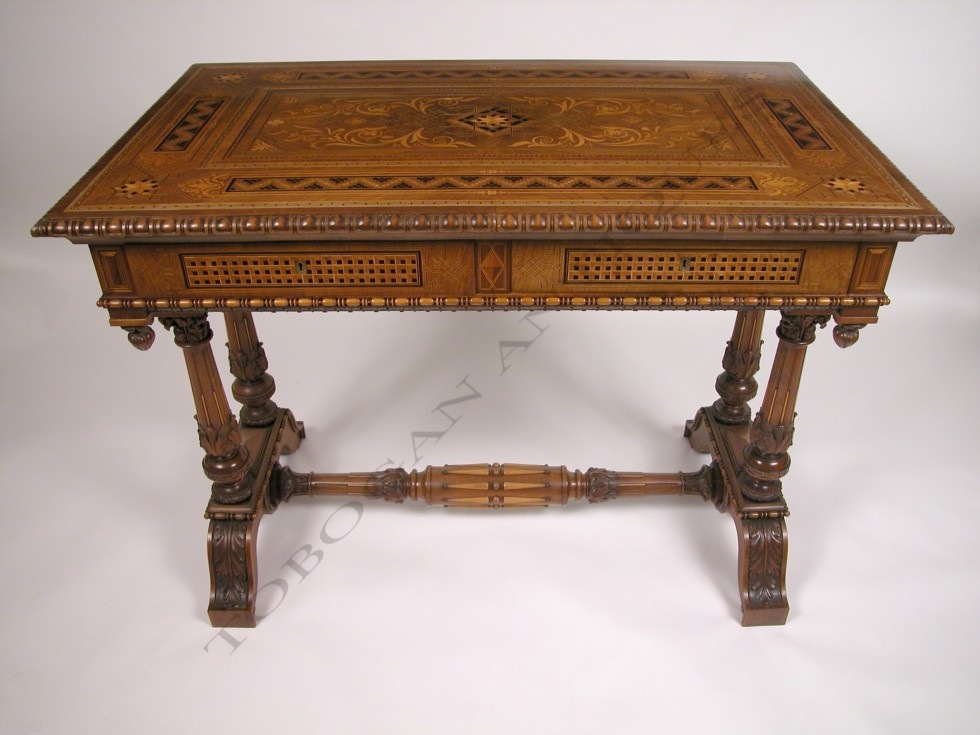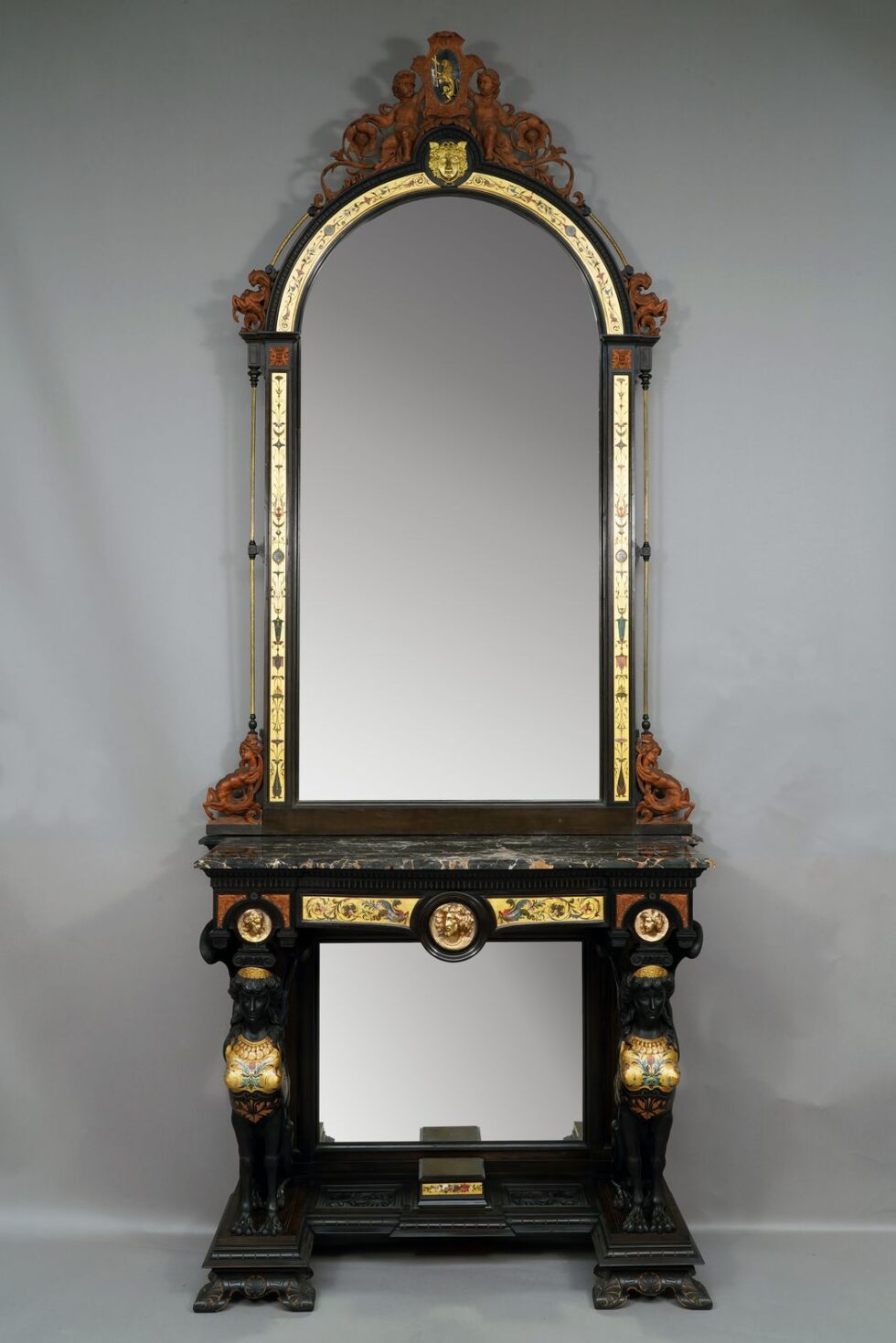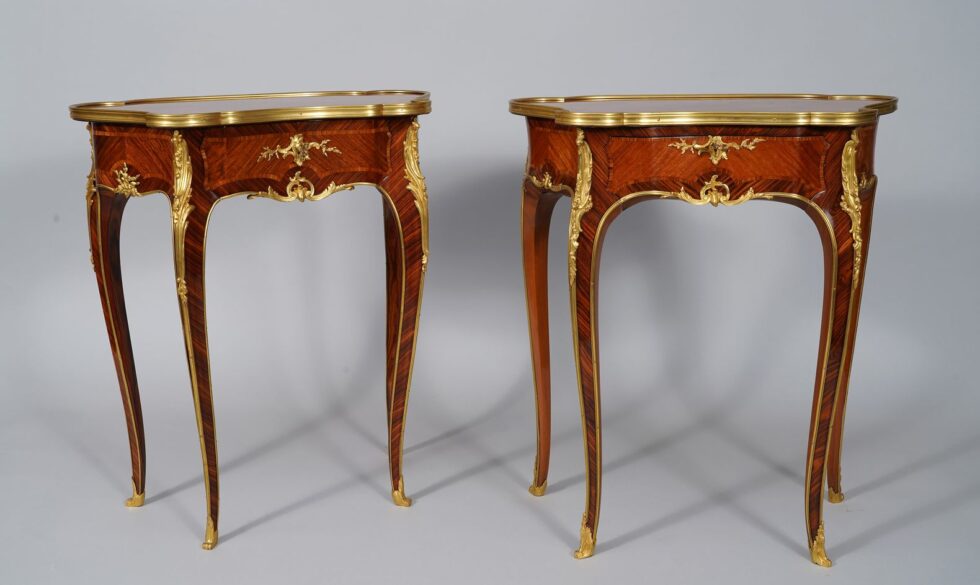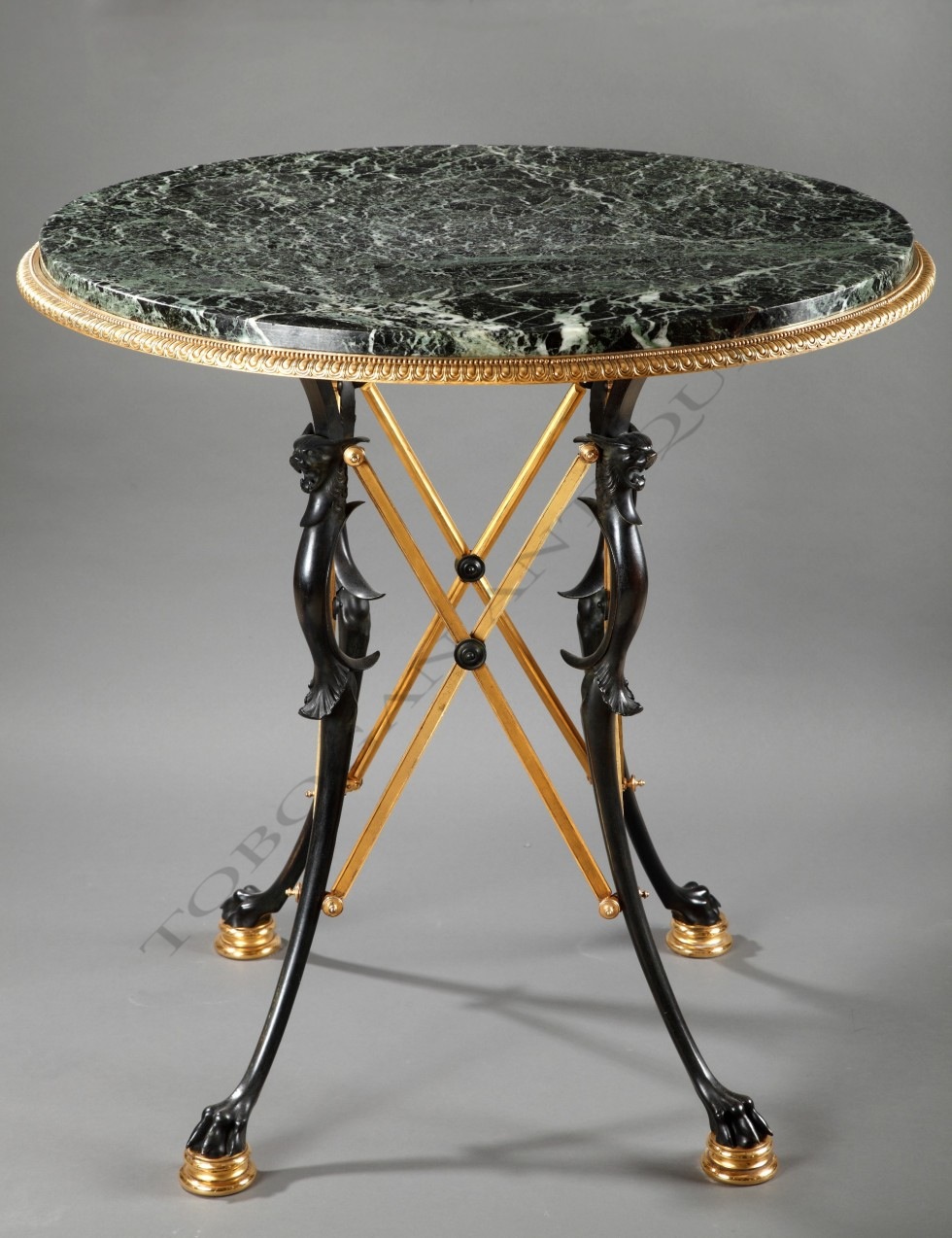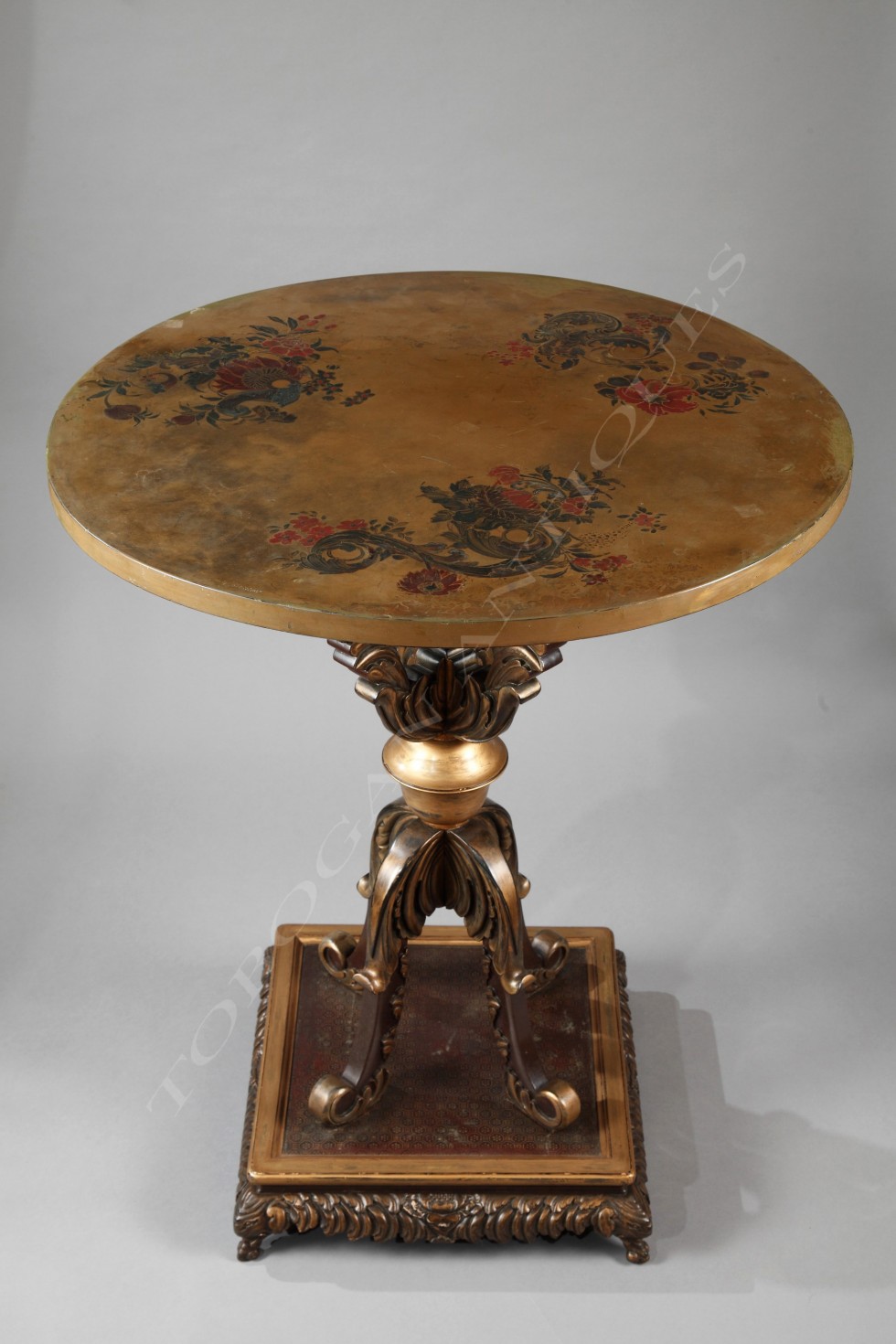L.C. Sévin
Sculptor-ornemanist
(1821-1888)
F. Barbedienne
Bronze-caster
(1810-1892)
(Attributed to)
Neo-Greek Gueridon
France
Circa 1880
Gilded and silvered bronze, Onyx
Height : 77 cm (30,3 in.) ; Diameter : 95 cm (37,4 in.)
Gueridon made in silvered and gilded bronze, composed of four claw feet decorated with lion’s head held together by crossed bars in gilded bronze. It is surmounted by a large onyx top surrounded by a frieze of ovals and beads.
related work
The feet of these gueridons adopt a sleek design and are adorned with claws and lion heads. This model is well known in the Barbedienne Company production and it has been reused many times by his workshop. This gueridon shows how the Barbedienne Company offered a range of furniture from the designs of its decorator Louis-Constant Sévin. He designed this model of gueridon few time after he joined the Barbedienne Company in 1855 and this model can be seen on different interior decorations of the Second Empire.
A tripod gueridon, a little bit higher, with feet like these ones can be seen on a picture showing the atrium of the Pompeiian house built for Prince Napoleon. Most of the Ancient style furniture was made by Charles Rossigneux (1818-1908) but this gueridon shows that the Barbedienne Company took also part to this work.
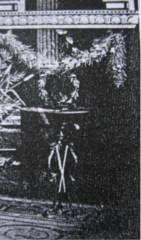
View of the atrium of the Pompeian style house of the Prince Napoléon
A picture of the Emperor’s study at Saint-Cloud Castle demonstrates that a gueridon of the same type took place in it ; it illustrates the success of this model in the imperial family.
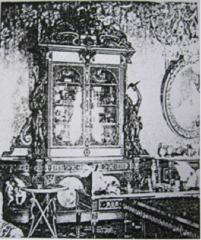
View of the cabinet de l’Empereur à Saint-Cloud (reproduced in Des Tuileries à Saint-Cloud, l’art décoratif du Second Empire)
Some years later the Gazette des Beaux-Arts published an engraving depicting a gueridon exhibited at the 1889 Universal Exhibition. The engraving shows a gilt bronze plate resting on a tripod having identical feet and it reveals the longevity of this model inside the Barbedienne Company production. The caption mentions “Bronze plate designed by Mr Levillain and made by Mr Barbedienne (1889 Universal Exhibition)”.

Guéridon, Exposition Universelle de 1889 (reproduced in Gazette des Beaux-Arts, p. 415)
The neo-Greek style
These gueridons illustrate the neo-Greek style developed in France in the 19th century. Inspired from the Greek Antiquity this style used Ancient features to create new artworks by re-interprating Ancient inspirations with modern taste.
To design these gueridons Louis-Constant Sévin probably drew his inspiration from the Ancient bronze tripods offered to the Greek athletes as a reward for their sport exploit. The Ancient tripod is used by the designer who distorted it from its original form and used it to create a fashionable furniture item.
Biographies
Louis-Constant Sévin (1821-1888) : he was first trained to design and sculpture with the sculptor Antoine-André Marneuf (1796-1865). In 1839 he went into partnership with two sculptors, Phénix and Joyau, and he created designs for famous goldsmiths such as Denière, Froment-Meurice and Morel. He fled to London during the 1848 Revolution where he worked at Morel, with whom he exhibited art works at the 1851 Universal Exhibition. Back to France he took part to the 1855 Universal Exhibition by creating designs to the Limoges porcelain makers Jouhanneaud and Dubois. Since then he worked as head decorator at Ferdinand Barbedienne’s Company. He produced a lot of works : he designed the bronze decoration for the Paiva’s Hotel (on the Champs-Elysées avenue) and created models for Ferdinand Barbedienne. He participated in different exhibitions and was awarded at the 1862 London Universal Exhibition for the artistical excellence of the furniture items he designed and which are exhibited by Barbedienne. He also received a Gold Medal as collaborator at the 1863 Central Union of Decorative Arts Exhibition.
Ferdinand Barbedienne (1810-1892) : he created and headed at n°30 boulevard Poissonnière in Paris one of the most famous 19th century artistic bronze casting companies. He owed his reputation to his bronze casting of Ancient and modern sculptures, which subjects came from the greatest European museums, but also to his original bronze works designed in his workshop and reserved for furniture and decoration. In addition to his own production, Barbedienne worked for renowned sculptors such as Barrias, Bosio, Clésinger or Carrier-Belleuse. Awarded with two Council Medals at the 1851 London Universal Exhibition, the Barbedienne Company won at the 1855 Paris Universal Exhibition a medal of honor and eleven cooperator’s medals for the work of his co-workers, designers and chasers. The success of the Barbedienne Company at the diverse international exhibitions earned it several official commissions, as providing ornamental bronze for the Pompeiian house of Prince Napoleon, about 1860, avenue Montaigne in Paris. At the 1867 Universal Exhibition in his capacity as member of and speaker for the Jury, he was non-contestant, but exhibited nevertheless with great success cloisonné and champlevé enameled pieces. Barbedienne was made an Officer of the Légion d’Honneur in 1867 and Commander in 1878 when he was compared with “a prince of industry and the king of bronze casting”. His glory did not decline with the passage of the time for at the Universal Exhibition of 1889 the critics thanked Barbedienne for the example he set for other bronze-casters by the perfection of his bronzes.
Literature
– Gazette des Beaux-Arts, 1er octobre 1889, p. 415.
– Des Tuileries à Saint-Cloud, l’art décoratif du Second Empire, Henri Clouzot, Payot, Paris, 1935.
– « La maison pompéienne du Prince Napoléon avenue Montaigne », Marie-Claude Dejean de la Batie, in La Gazette des Beaux-arts, t. LXXXVII, 1287e livraison, avril 1976, pp. 127-134. fig. 7.
Contact us
Tobogan Newsletter
If you want to be up-to-date with our new acquirings you can sign up to our newsletter.


